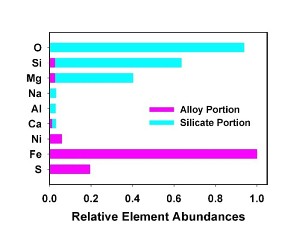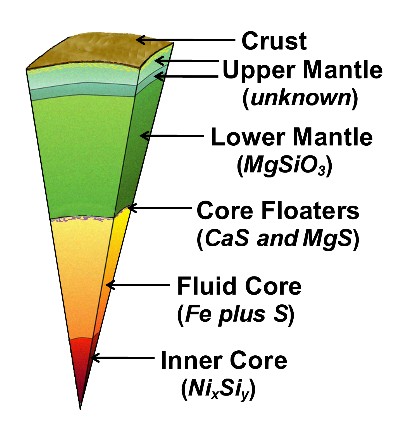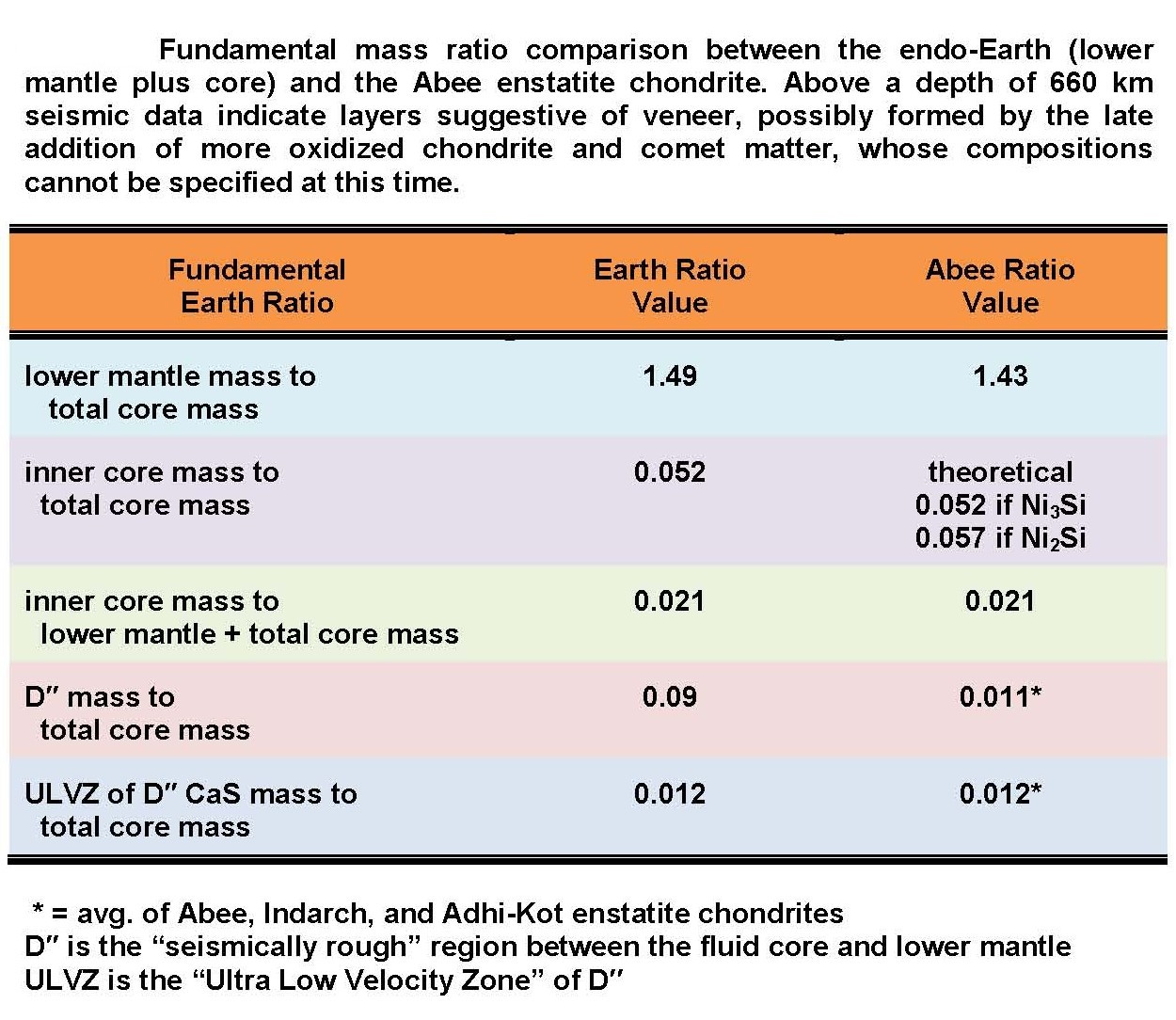 
J. Marvin Herndon's Chemical Identification of D'' |

 More
than a half century ago, Keith Bullen, pictured at left, discovered a zone of seismic “roughness”,
called D′′, located between the core and the seismically-featureless lower
mantle [1-4]. Before Herndon, seismic discontinuities within the Earth’s mantle,
including at D′′, were ascribed to physical changes in a medium of uniform
composition, i.e., pressure-induced changes in crystal structure, rather than
boundaries between layers having different chemical compositions; in other
words, physics without chemistry.
More
than a half century ago, Keith Bullen, pictured at left, discovered a zone of seismic “roughness”,
called D′′, located between the core and the seismically-featureless lower
mantle [1-4]. Before Herndon, seismic discontinuities within the Earth’s mantle,
including at D′′, were ascribed to physical changes in a medium of uniform
composition, i.e., pressure-induced changes in crystal structure, rather than
boundaries between layers having different chemical compositions; in other
words, physics without chemistry.
Only five chemical elements, iron, magnesium, silicon, oxygen, and sulfur, account for about 95% of the mass of any chondrite meteorite; 98%, if the four minor elements, nickel, calcium, aluminum, and sodium, are included [5]. The figure at right shows the distribution of those elements between silicate and iron alloy for the Abee enstatite chondrite and, by inference the endo-Earth (lower mantle plus core). Note the occurrence of silicon, calcium and magnesium in the iron alloy portion. These high-oxygen-affinity elements occur in part in the iron alloy because of limited availability of oxygen in this highly reduced matter.
 Generally,
elements that have a high affinity for oxygen tend to be incompatible in an
iron-based alloy. Upon cooling from a high temperature, these incompatible
elements will precipitate as soon as thermodynamically feasible, as described by
J. Marvin Herndon. Silicon combined with nickel and sank to
form the Earth's nickel silicide inner core whereas calcium and magnesium
combined with sulfur to form CaS and MgS which floated to the top of the core
forming D′′[5-11] as illustrated at left.
Generally,
elements that have a high affinity for oxygen tend to be incompatible in an
iron-based alloy. Upon cooling from a high temperature, these incompatible
elements will precipitate as soon as thermodynamically feasible, as described by
J. Marvin Herndon. Silicon combined with nickel and sank to
form the Earth's nickel silicide inner core whereas calcium and magnesium
combined with sulfur to form CaS and MgS which floated to the top of the core
forming D′′[5-11] as illustrated at left.
Seismic investigations have revealed a 5-40 km thick layer within D′′, adjacent to the Earth’s core, called the Ultra-Low Velocity Zone, where earthquake S-wave velocity drops by about 30% and P-wave velocity reduces by about 10%. According to Herndon, CaS comprises the Ultra-Low Velocity Zone [10-11]. Qualitatively one might suspect lower earthquake wave velocities in CaS than in MgS because of the heavier atomic weight of calcium. This is an instance where experimental and/or theoretical investigations of wave velocities can be definitive.
 The table
at right shows the fundamental mass ratio
relationships, discovered by Herndon, that identify the mineralogically determined parts of enstatite chondrites with seismically
determined parts of the Earth [11].
The table
at right shows the fundamental mass ratio
relationships, discovered by Herndon, that identify the mineralogically determined parts of enstatite chondrites with seismically
determined parts of the Earth [11].
|
References |
|
| 1. |
Bullen, K. E., Compressibility-pressure hypothesis and the Earth's interior. Monthly Notices of the Royal Astronomical Society, Geophysical Supplement, 1949. 5, 355-398. |
| 2. | Manglik, A., New insights into core-mantle boundary region and implications for Earth's internal processes. Current Science, 2010, 99, 1733-1738. |
| 3. | Vidale, J. E. and Benz, H. M., Seismological mapping of the fine structure near the base of the Earth's mantle. Nature, 1993, 361, 529-532. |
| 4. | Bina, C. R., Mantle discontinuities.Reviews of Geophysics, Supplement, 1991, 783-793. |
| 5. | Herndon, J. M., Feasibility of a nuclear fission reactor at the center of the Earth as the energy source for the geomagnetic field. Journal of Geomagnetism and Geoelectricity, 1993, 45, 423-437. (click here for pdf) |
| 6. | Herndon, J. M., Sub-structure of the inner core of the Earth. Proceedings of the National Academy of Sciences USA, 1996, 93, 646-648. (click here for pdf) |
| 7. |
Herndon, J. M., Composition of the deep interior of the Earth: Divergent geophysical development with fundamentally different geophysical implications. Physics of the Earth and Planetary Interiors, 1998, 105, 1-4. |
| 8. | Herndon, J. M., Scientific basis of knowledge on Earth's composition. Current Science, 2005, 88, 1034-1037. (click here for pdf) |
| 9. | Herndon, J. M., Nature of planetary matter and magnetic field generation in the Solar System. Current Science, 2009, 96, 1033-1039. (click here for pdf) |
| 10. | Herndon, J. M., Chemical basis of deep-Earth physics: Emphasis on the core-mantle boundary D''. 2011, arXiv:1101.4871509 (click here for pdf) |
| 11. | Herndon, J. M., Geodynamic basis of heat transport in the Earth. Current Science, 2011, 101, 1440-1450. (click here for pdf) |